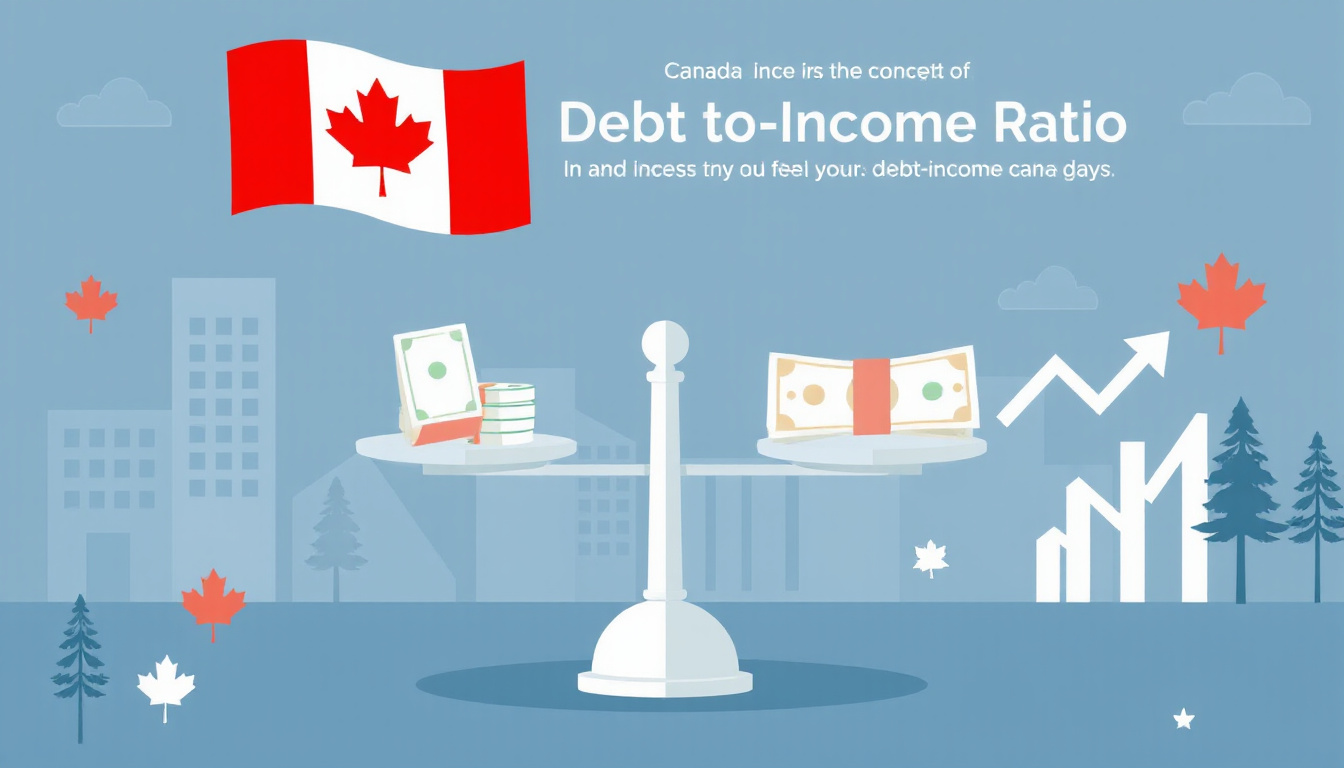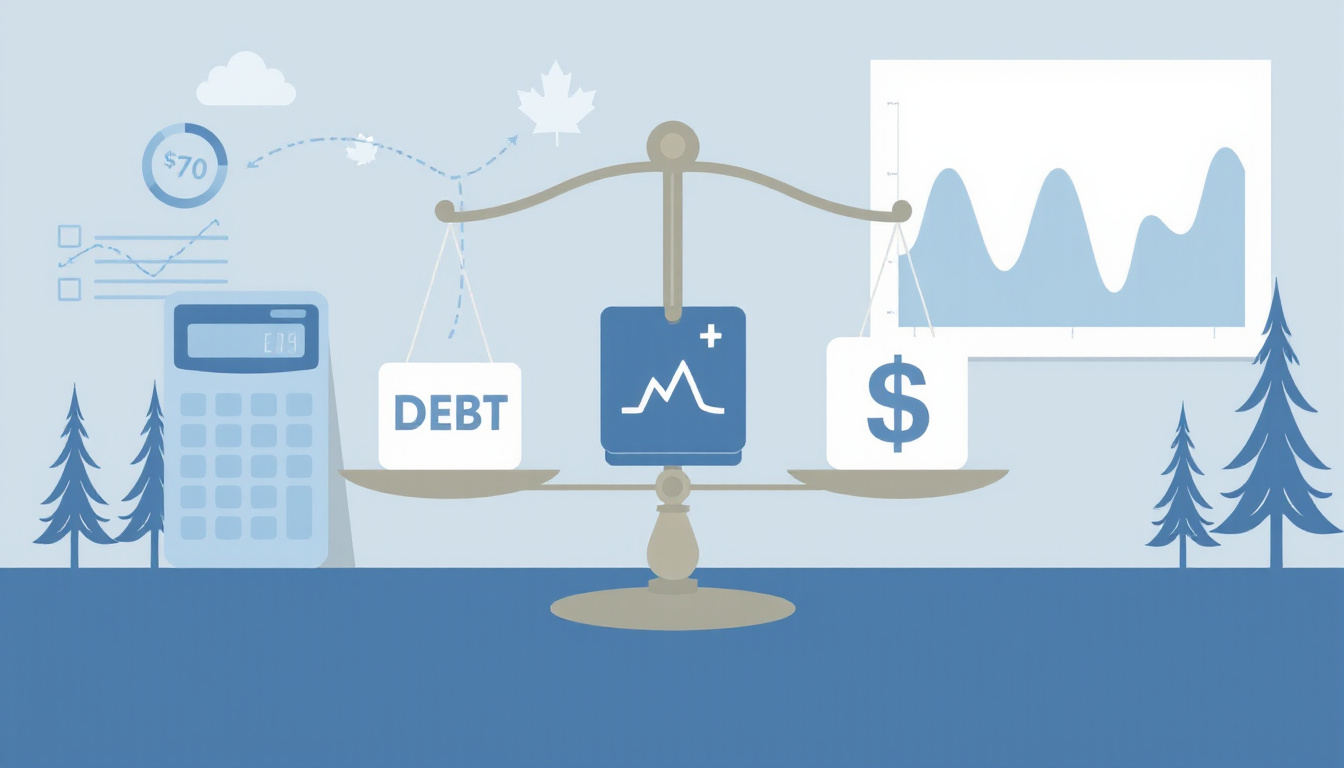As of 2025, the average debt-to-income ratio in Canada is estimated to be around 175%. This statistic highlights the balance between an individual’s total debt payments and their overall income, underscoring the financial pressure many Canadians face today. Understanding the debt-to-income ratio is crucial for both individuals and financial professionals, as it gives a clear picture of a household’s financial health and ability to manage debt.
The debt-to-income ratio (DTI) is a key financial indicator that measures how much of a person’s income is being spent on debt obligations. A DTI ratio above 40% is often seen as a warning sign, indicating potential financial distress. Recent trends indicate a worrying escalation in this ratio, with a significant portion of Canadian households feeling the weight of high debt levels.
In this blog, we will delve into what the debt-to-income ratio means, current trends affecting Canadians’ financial stability in 2025, how to effectively calculate your DTI, and practical tips for improving your ratio. By addressing these critical aspects, this article aims to provide valuable insights that may assist journalists and bloggers in their coverage of Canadian finance.

Key Takeaways
- The debt-to-income ratio is a crucial measure of your financial health, reflecting the percentage of your income that goes toward debt repayment.
- In 2025, Canada is experiencing notable trends in debt-to-income ratios that impact borrowing and lending practices.
- Calculating your debt-to-income ratio involves dividing your total monthly debt payments by your gross monthly income.
- Improving your debt-to-income ratio can enhance your financial prospects and enable better access to loans and mortgages.
- Practical tips for financial success include reducing debt, increasing income, and maintaining a budget to manage expenses effectively.
What is the Debt-to-Income Ratio and Why is it Important?
In 2025, the average debt-to-income (DTI) ratio in Canada is projected to reach approximately 181%, indicating that Canadians are carrying nearly $
1.81 in debt for every dollar of disposable income. This statistic underscores the growing financial strain many households face and highlights the importance of understanding the DTI ratio as a measure of financial health. A high DTI ratio can signal excessive debt loads, which could limit access to further credit and compromise long-term financial stability. According to recent data from Statistics Canada, high DTI ratios are indicative of a reliance on debt for essential expenses, making it crucial for Canadians to monitor their financial obligations closely. As the economy continues to evolve, maintaining a healthy DTI ratio is essential for both individual financial health and the overall economic landscape in Canada.
Current Trends in Debt-to-Income Ratios in Canada (2025)
As of 2025, the average debt-to-income ratio in Canada is projected to reach approximately 175%, indicating that Canadians owe $1.75 for every dollar they earn. This high ratio reflects a growing trend of financial strain among households, exacerbated by rising interest rates and increased living costs. According to Statistics Canada, these levels of debt can limit consumers’ ability to save and invest, highlighting the significance of monitoring one’s financial health. The debt-to-income ratio has steadily increased from 165% in 2020, raising concerns among economists regarding potential financial crises. Effects of elevated debt include decreased disposable income and increased reliance on credit, pushing more Canadians towards debt relief solutions. For additional insights, check the complete report on Statistics Canada.
‘The ability to manage your debt is just as important as the ability to earn.’ – Unknown

How to Calculate Your Debt-to-Income Ratio
In 2025, the average debt-to-income ratio in Canada is projected to be around 150%, meaning that Canadians owe $1.50 for every dollar they earn. This critical statistic highlights the escalating burden of debt on Canadian households. The debt-to-income ratio is an essential metric used by lenders to assess an individual’s ability to manage monthly payments and repay debts. As reported by the Bank of Canada, this number reflects ongoing trends in consumer credit, housing prices, and living costs. To calculate your own debt-to-income ratio, you can use the formula: total monthly debt payments divided by gross monthly income, multiplied by
100. This will give you a percentage that indicates what portion of your income goes towards debt repayment. A lower ratio is generally preferable, as it suggests better financial health and a lower risk of default.
Tips for Improving Your Debt-to-Income Ratio for Financial Success
In 2025, the average debt-to-income ratio in Canada is projected to reach approximately 170%, indicating a concerning trend in consumer debt levels. This means that, on average, Canadians owe $1.70 for every dollar they earn, making it crucial for individuals and families to focus on improving their financial health. The debt-to-income ratio is a critical metric used by lenders to assess an individual’s ability to manage monthly payments and repay debts. A lower ratio typically reflects better financial health, allowing for greater access to credit and lower interest rates. To enhance your debt-to-income ratio, consider strategies such as assessing and reducing outstanding debts, increasing income through side hustles or additional work hours, and creating a strict budget to manage expenses effectively. Staying mindful of your ratio not only benefits your immediate financial situation but also serves as a foundational indicator of long-term financial success. This data is affirmed by Statistics Canada, which monitors debt trends within the country.
